GENERAL CHARACTERISTICS OF THE GERMANIC LANGUAGES OUTLINE 1.

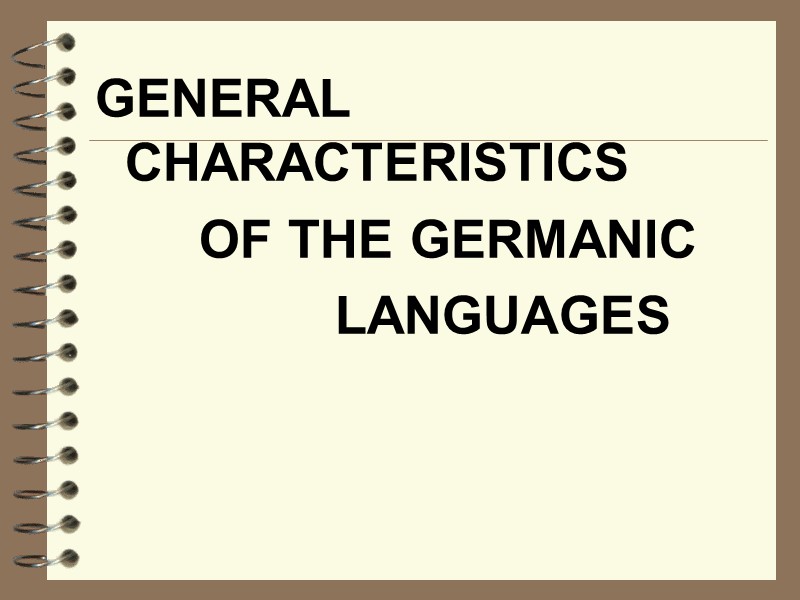
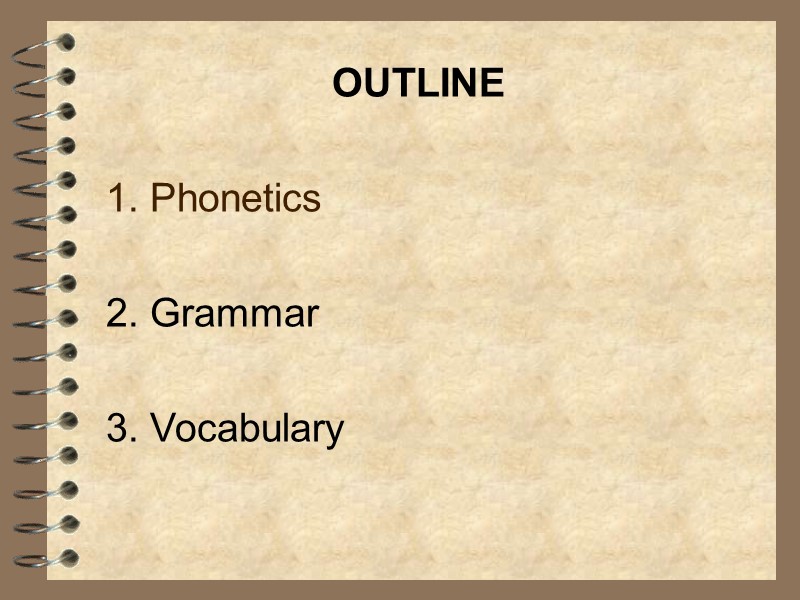
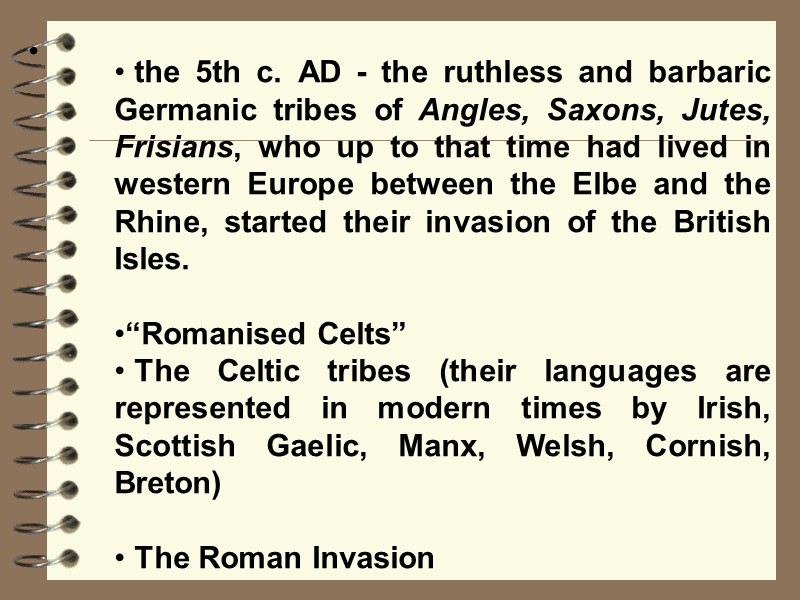
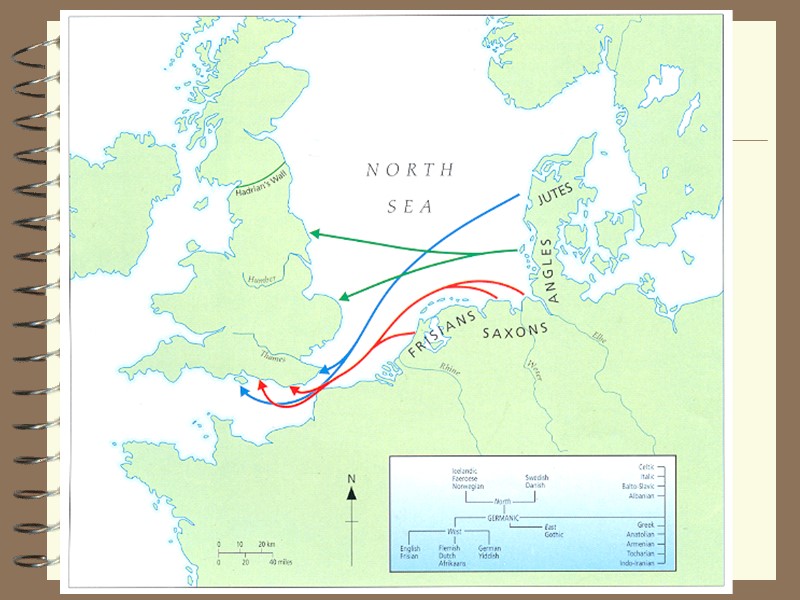
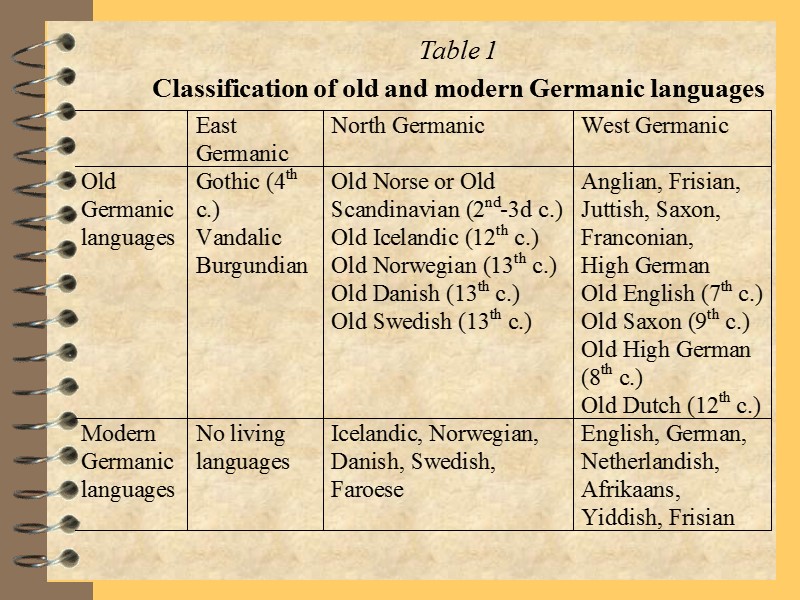
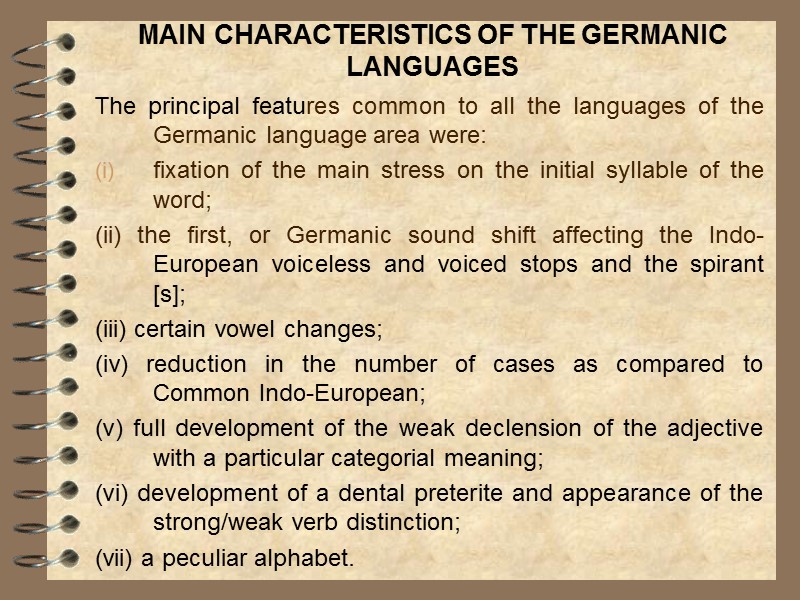
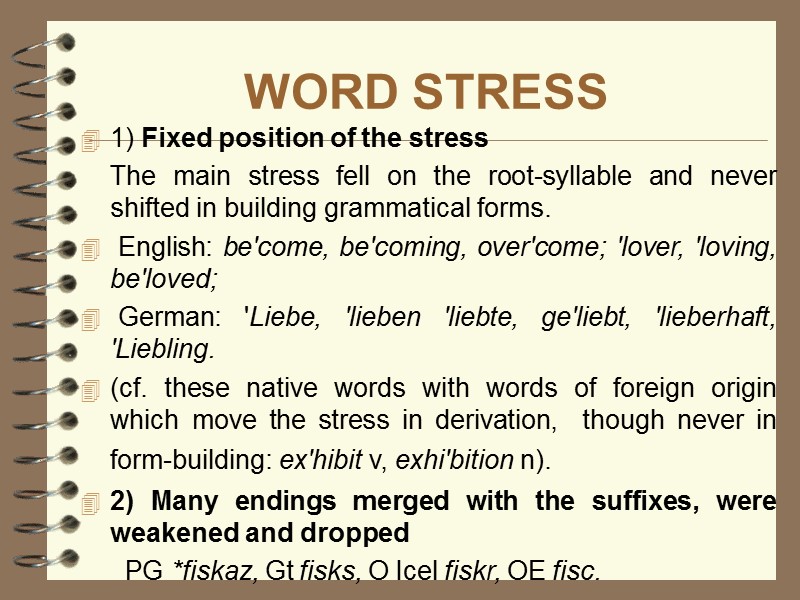
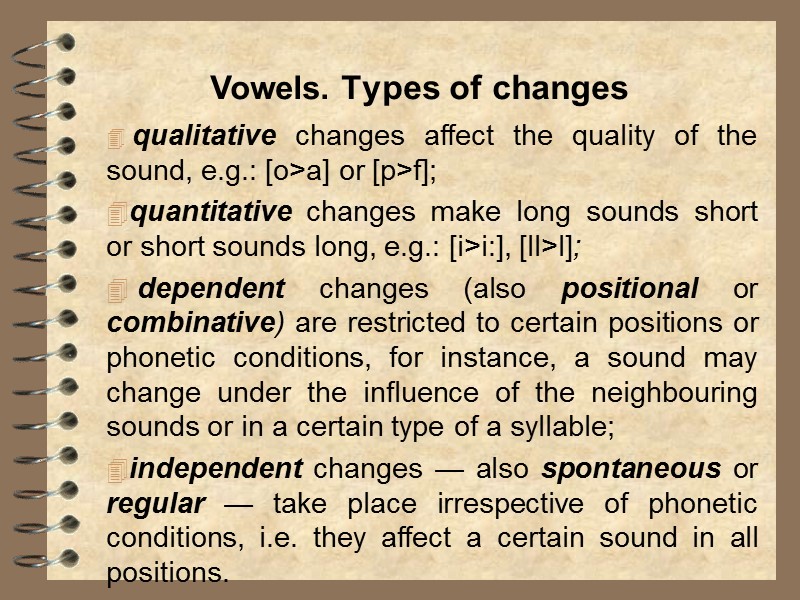
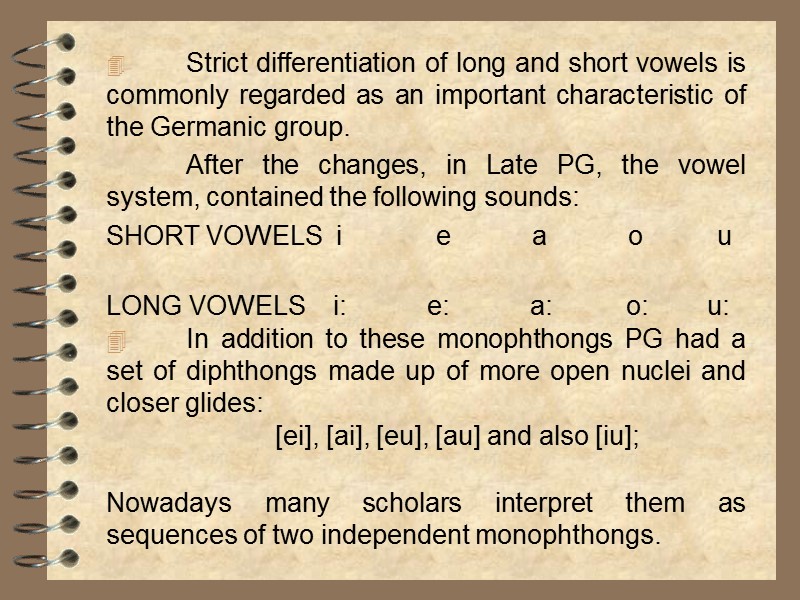
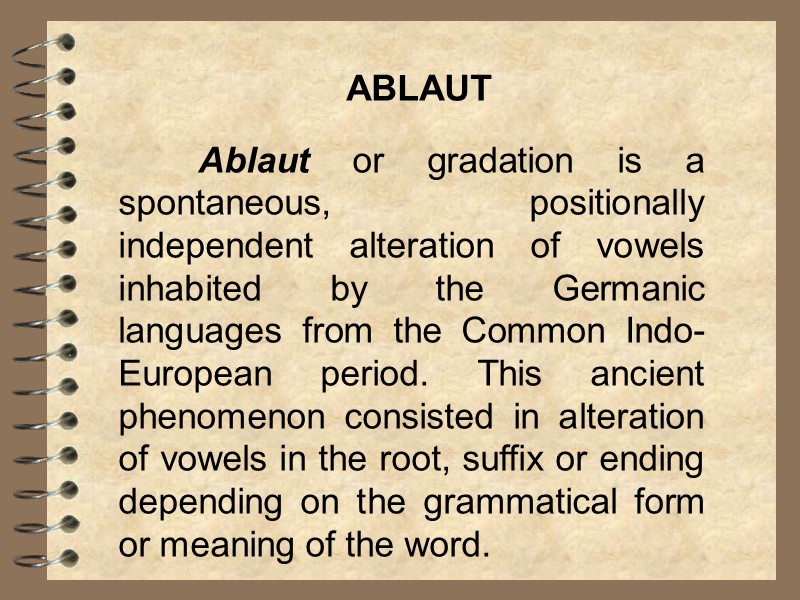

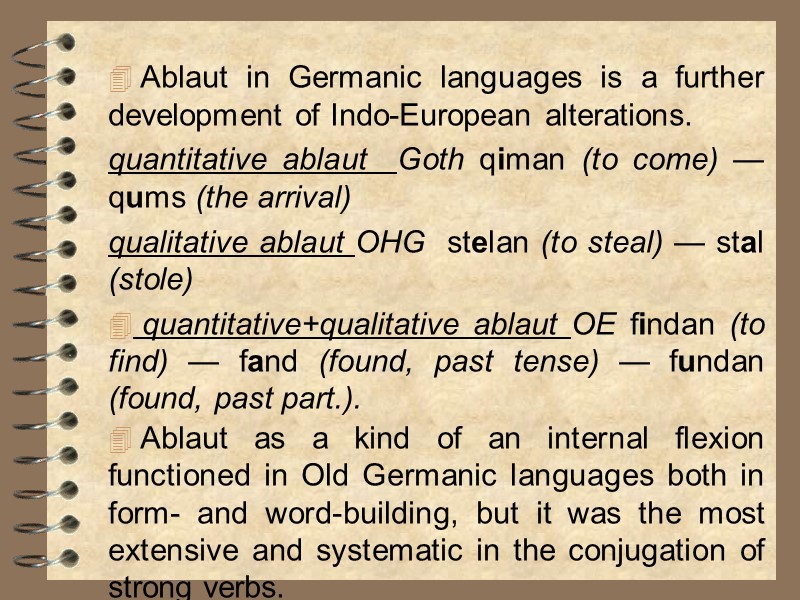
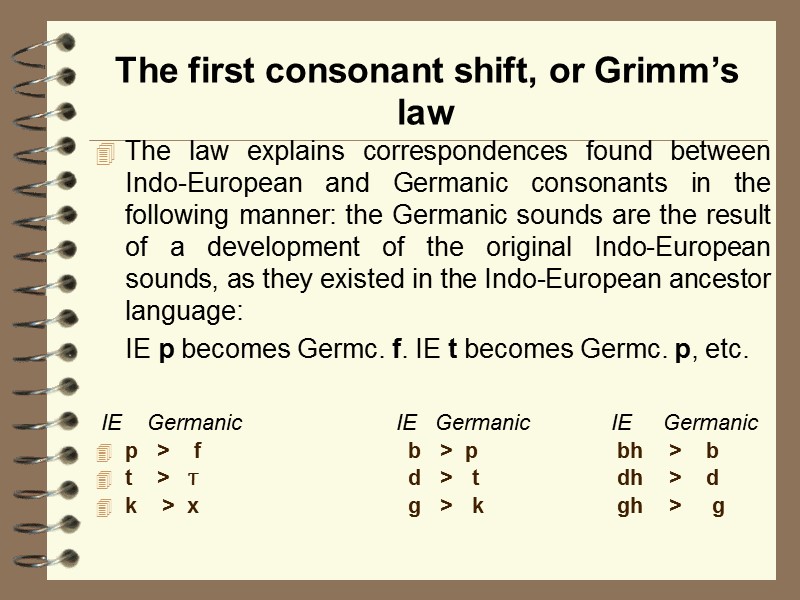
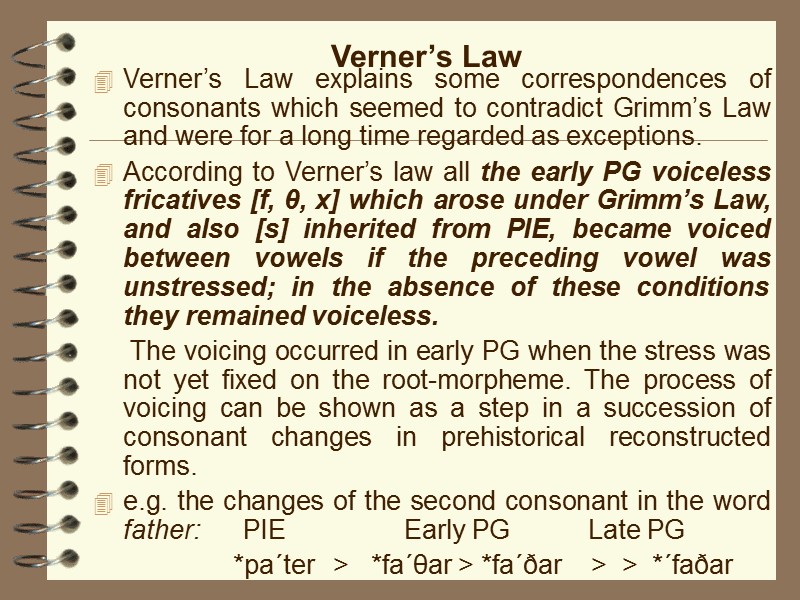
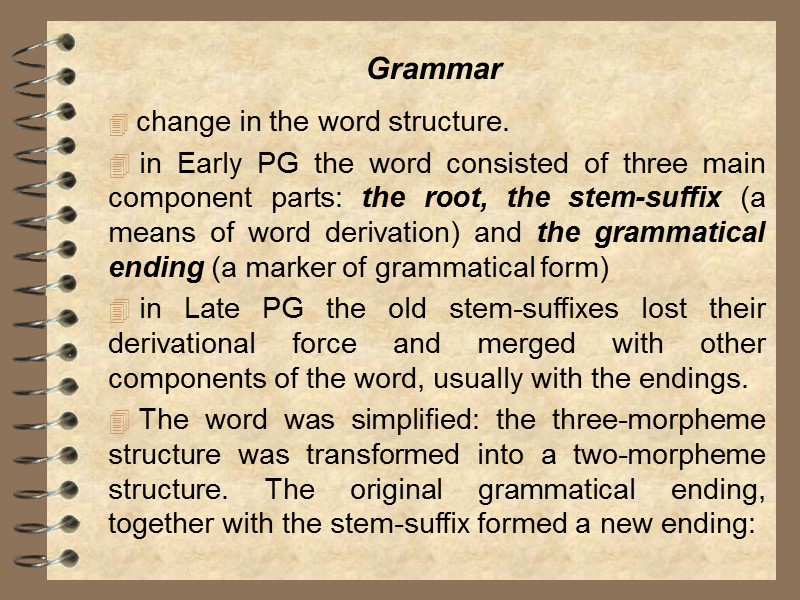
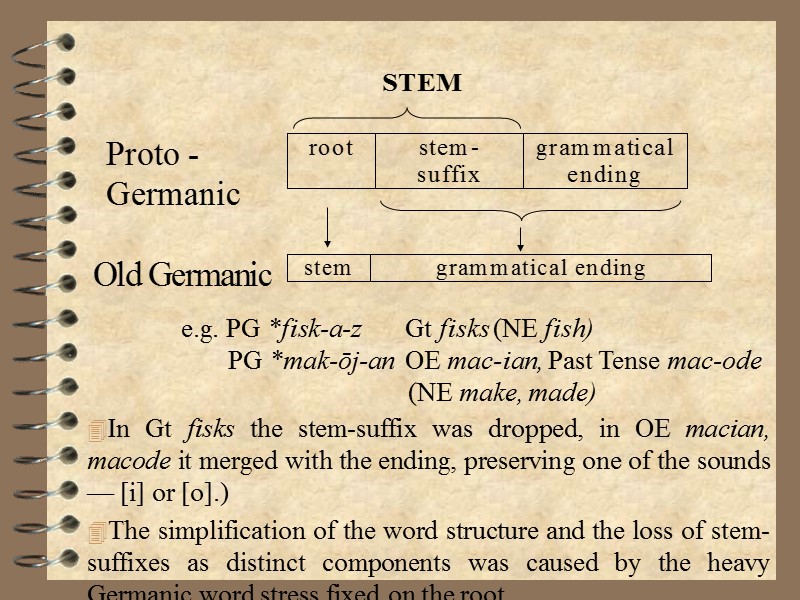
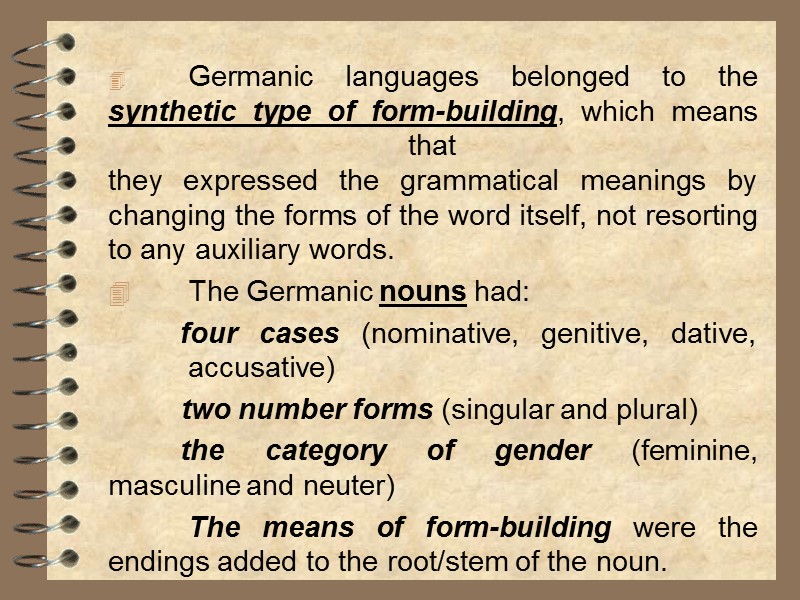
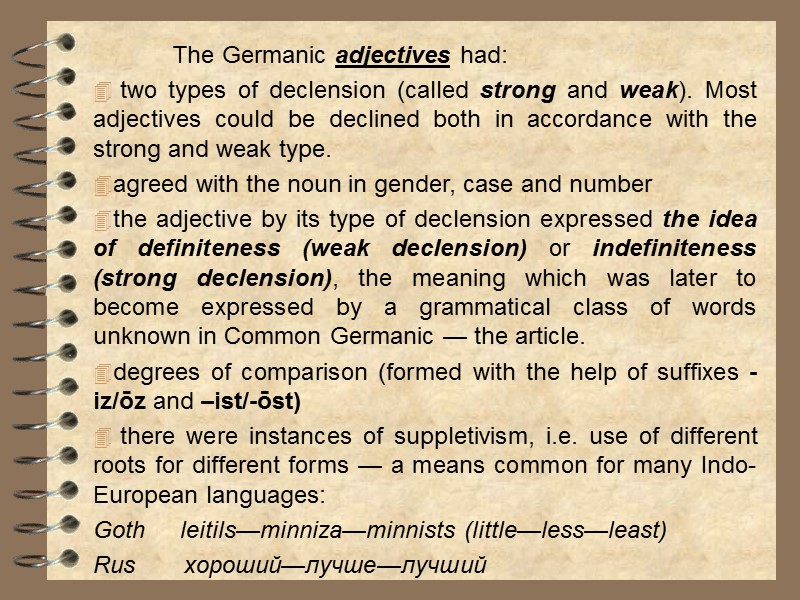
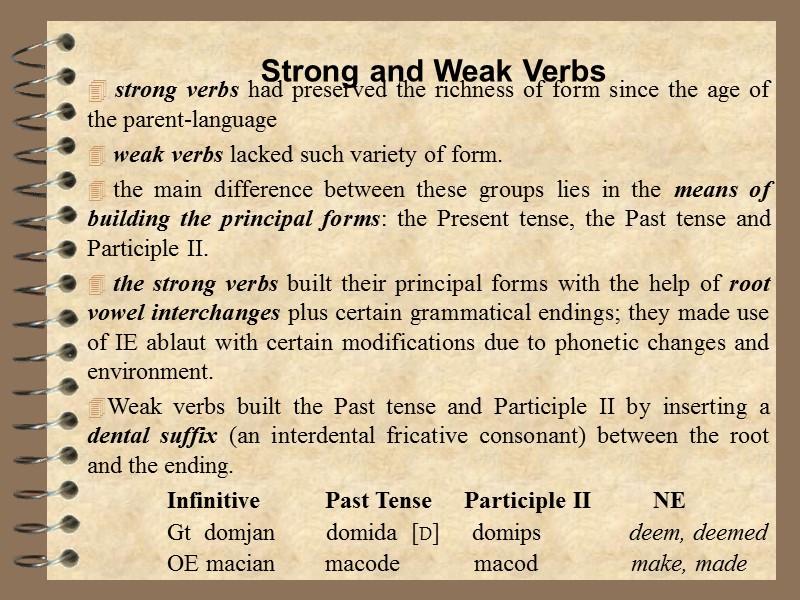

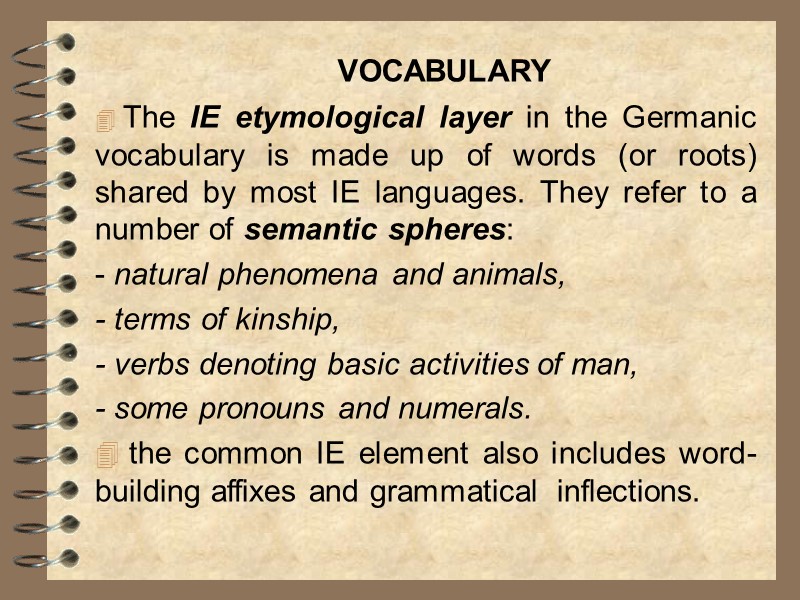
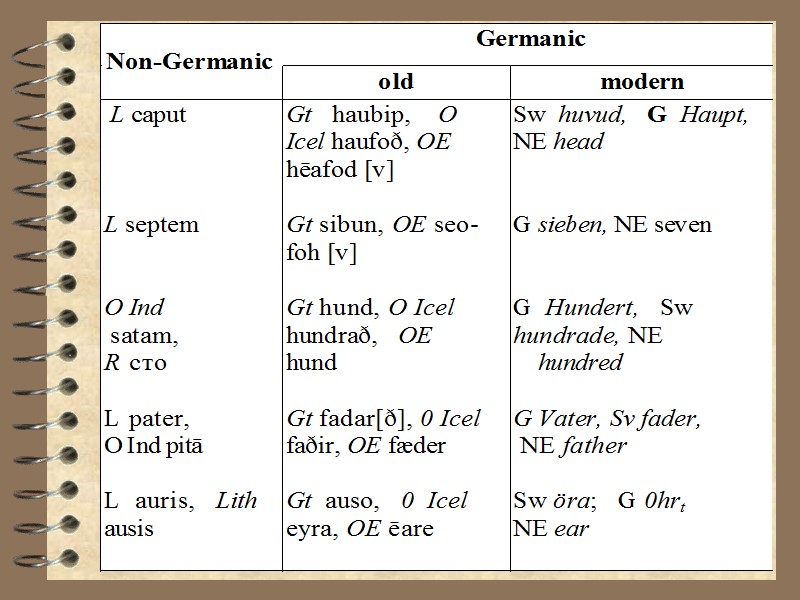
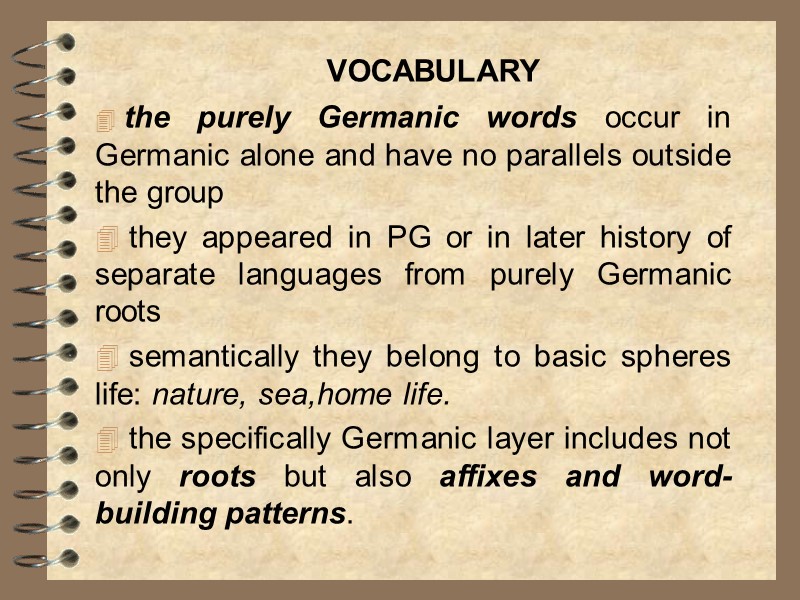

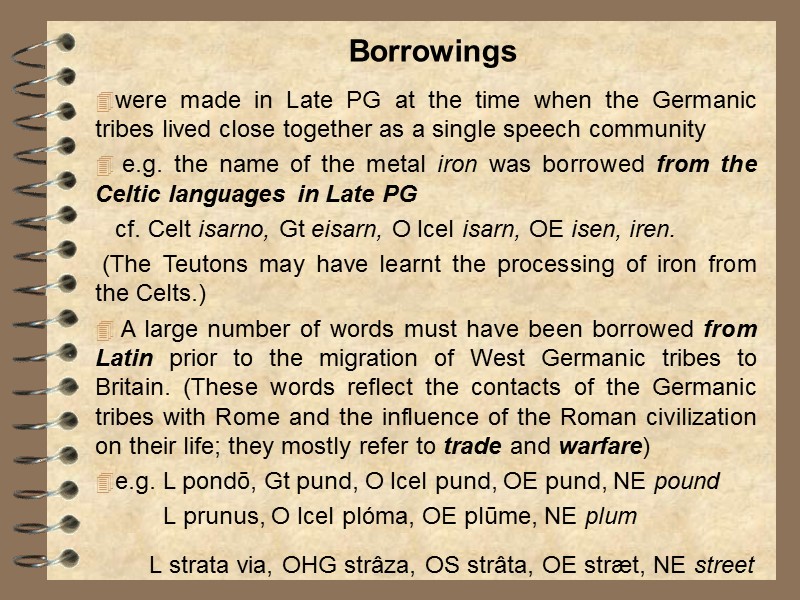
27906-germanic_languages.ppt
- Количество слайдов: 25
 GENERAL CHARACTERISTICS OF THE GERMANIC LANGUAGES
GENERAL CHARACTERISTICS OF THE GERMANIC LANGUAGES
 OUTLINE 1. Phonetics 2. Grammar 3. Vocabulary
OUTLINE 1. Phonetics 2. Grammar 3. Vocabulary
 the 5th c. AD - the ruthless and barbaric Germanic tribes of Angles, Saxons, Jutes, Frisians, who up to that time had lived in western Europe between the Elbe and the Rhine, started their invasion of the British Isles. “Romanised Celts” The Celtic tribes (their languages are represented in modern times by Irish, Scottish Gaelic, Manx, Welsh, Cornish, Breton) The Roman Invasion
the 5th c. AD - the ruthless and barbaric Germanic tribes of Angles, Saxons, Jutes, Frisians, who up to that time had lived in western Europe between the Elbe and the Rhine, started their invasion of the British Isles. “Romanised Celts” The Celtic tribes (their languages are represented in modern times by Irish, Scottish Gaelic, Manx, Welsh, Cornish, Breton) The Roman Invasion

 Table 1 Classification of old and modern Germanic languages
Table 1 Classification of old and modern Germanic languages
 MAIN CHARACTERISTICS OF THE GERMANIC LANGUAGES The principal features common to all the languages of the Germanic language area were: fixation of the main stress on the initial syllable of the word; (ii) the first, or Germanic sound shift affecting the Indo-European voiceless and voiced stops and the spirant [s]; (iii) certain vowel changes; (iv) reduction in the number of cases as compared to Common Indo-European; (v) full development of the weak declension of the adjective with a particular categorial meaning; (vi) development of a dental preterite and appearance of the strong/weak verb distinction; (vii) a peculiar alphabet.
MAIN CHARACTERISTICS OF THE GERMANIC LANGUAGES The principal features common to all the languages of the Germanic language area were: fixation of the main stress on the initial syllable of the word; (ii) the first, or Germanic sound shift affecting the Indo-European voiceless and voiced stops and the spirant [s]; (iii) certain vowel changes; (iv) reduction in the number of cases as compared to Common Indo-European; (v) full development of the weak declension of the adjective with a particular categorial meaning; (vi) development of a dental preterite and appearance of the strong/weak verb distinction; (vii) a peculiar alphabet.
 WORD STRESS 1) Fixed position of the stress The main stress fell on the root-syllable and never shifted in building grammatical forms. English: be'come, be'coming, over'come; 'lover, 'loving, be'loved; German: 'Liebe, 'lieben 'liebte, ge'liebt, 'lieberhaft, 'Liebling. (cf. these native words with words of foreign origin which move the stress in derivation, though never in form-building: ex'hibit v, exhi'bition n). 2) Many endings merged with the suffixes, were weakened and dropped PG *fiskaz, Gt fisks, O Icel fiskr, OE fisc.
WORD STRESS 1) Fixed position of the stress The main stress fell on the root-syllable and never shifted in building grammatical forms. English: be'come, be'coming, over'come; 'lover, 'loving, be'loved; German: 'Liebe, 'lieben 'liebte, ge'liebt, 'lieberhaft, 'Liebling. (cf. these native words with words of foreign origin which move the stress in derivation, though never in form-building: ex'hibit v, exhi'bition n). 2) Many endings merged with the suffixes, were weakened and dropped PG *fiskaz, Gt fisks, O Icel fiskr, OE fisc.
 Vowels. Types of changes qualitative changes affect the quality of the sound, e.g.: [o>a] or [p>f]; quantitative changes make long sounds short or short sounds long, e.g.: [i>i:], [ll>l]; dependent changes (also positional or combinative) are restricted to certain positions or phonetic conditions, for instance, a sound may change under the influence of the neighbouring sounds or in a certain type of a syllable; independent changes — also spontaneous or regular — take place irrespective of phonetic conditions, i.e. they affect a certain sound in all positions.
Vowels. Types of changes qualitative changes affect the quality of the sound, e.g.: [o>a] or [p>f]; quantitative changes make long sounds short or short sounds long, e.g.: [i>i:], [ll>l]; dependent changes (also positional or combinative) are restricted to certain positions or phonetic conditions, for instance, a sound may change under the influence of the neighbouring sounds or in a certain type of a syllable; independent changes — also spontaneous or regular — take place irrespective of phonetic conditions, i.e. they affect a certain sound in all positions.
 Strict differentiation of long and short vowels is commonly regarded as an important characteristic of the Germanic group. After the changes, in Late PG, the vowel system, contained the following sounds: SHORT VOWELS i e a o u LONG VOWELS i: e: a: o: u: In addition to these monophthongs PG had a set of diphthongs made up of more open nuclei and closer glides: [ei], [ai], [eu], [au] and also [iu]; Nowadays many scholars interpret them as sequences of two independent monophthongs.
Strict differentiation of long and short vowels is commonly regarded as an important characteristic of the Germanic group. After the changes, in Late PG, the vowel system, contained the following sounds: SHORT VOWELS i e a o u LONG VOWELS i: e: a: o: u: In addition to these monophthongs PG had a set of diphthongs made up of more open nuclei and closer glides: [ei], [ai], [eu], [au] and also [iu]; Nowadays many scholars interpret them as sequences of two independent monophthongs.
 Ablaut or gradation is a spontaneous, positionally independent аlteration of vowels inhabited by the Germanic languages from the Common Indo-European period. This ancient phenomenon consisted in alteration of vowels in the root, suffix or ending depending on the grammatical form or meaning of the word. ABLAUT
Ablaut or gradation is a spontaneous, positionally independent аlteration of vowels inhabited by the Germanic languages from the Common Indo-European period. This ancient phenomenon consisted in alteration of vowels in the root, suffix or ending depending on the grammatical form or meaning of the word. ABLAUT
 TYPES OF ABLAUT The qualitative Ablaut is the alteration of different vowels, mainly the vowels [e] / [a] or [e] / [o] Old Icelandic bera (to give birth) — barn (baby) Old High German stelan (to steal) — stal (stole) Cf.: Russian бреду (I stroll, I wade) — брод (ford, wade) Latin tego (to cover, to cloth) — toga (clothes) Quantitative Ablaut means the change in length of qualitatively one and the same vowel: normal, lengthened and reduced. A classic example of the Indo-European Ablaut is the declension of the Greek word “pater” (father): [e:] [e] [ - ] patēr patěr patros (nominative case, (vocative case, (genitive case,lengthened stage) normal stage) reduced stage)
TYPES OF ABLAUT The qualitative Ablaut is the alteration of different vowels, mainly the vowels [e] / [a] or [e] / [o] Old Icelandic bera (to give birth) — barn (baby) Old High German stelan (to steal) — stal (stole) Cf.: Russian бреду (I stroll, I wade) — брод (ford, wade) Latin tego (to cover, to cloth) — toga (clothes) Quantitative Ablaut means the change in length of qualitatively one and the same vowel: normal, lengthened and reduced. A classic example of the Indo-European Ablaut is the declension of the Greek word “pater” (father): [e:] [e] [ - ] patēr patěr patros (nominative case, (vocative case, (genitive case,lengthened stage) normal stage) reduced stage)
 Ablaut in Germanic languages is a further development of Indo-European alterations. quantitative ablaut Goth qiman (to come) — qums (the arrival) qualitative ablaut OHG stelan (to steal) — stal (stole) quantitative+qualitative ablaut OE findan (to find) — fand (found, past tense) — fundan (found, past part.). Ablaut as a kind of an internal flexion functioned in Old Germanic languages both in form- and word-building, but it was the most extensive and systematic in the conjugation of strong verbs.
Ablaut in Germanic languages is a further development of Indo-European alterations. quantitative ablaut Goth qiman (to come) — qums (the arrival) qualitative ablaut OHG stelan (to steal) — stal (stole) quantitative+qualitative ablaut OE findan (to find) — fand (found, past tense) — fundan (found, past part.). Ablaut as a kind of an internal flexion functioned in Old Germanic languages both in form- and word-building, but it was the most extensive and systematic in the conjugation of strong verbs.
 The first consonant shift, or Grimm’s law The law explains correspondences found between Indo-European and Germanic consonants in the following manner: the Germanic sounds are the result of a development of the original Indo-European sounds, as they existed in the Indo-European ancestor language: IE p becomes Germc. f. IE t becomes Germc. p, etc. IE Germanic IE Germanic IE Germanic p > f b > p bh > b t > T d > t dh > d k > x g > k gh > g
The first consonant shift, or Grimm’s law The law explains correspondences found between Indo-European and Germanic consonants in the following manner: the Germanic sounds are the result of a development of the original Indo-European sounds, as they existed in the Indo-European ancestor language: IE p becomes Germc. f. IE t becomes Germc. p, etc. IE Germanic IE Germanic IE Germanic p > f b > p bh > b t > T d > t dh > d k > x g > k gh > g
 Verner’s Law Verner’s Law explains some correspondences of consonants which seemed to contradict Grimm’s Law and were for a long time regarded as exceptions. According to Verner’s law all the early PG voiceless fricatives [f, θ, x] which arose under Grimm’s Law, and also [s] inherited from PIE, became voiced between vowels if the preceding vowel was unstressed; in the absence of these conditions they remained voiceless. The voicing occurred in early PG when the stress was not yet fixed on the root-morpheme. The process of voicing can be shown as a step in a succession of consonant changes in prehistorical reconstructed forms. e.g. the changes of the second consonant in the word father: PIE Early PG Late PG *pa΄ter > *fa΄θar > *fa΄ðar > > *΄faðar
Verner’s Law Verner’s Law explains some correspondences of consonants which seemed to contradict Grimm’s Law and were for a long time regarded as exceptions. According to Verner’s law all the early PG voiceless fricatives [f, θ, x] which arose under Grimm’s Law, and also [s] inherited from PIE, became voiced between vowels if the preceding vowel was unstressed; in the absence of these conditions they remained voiceless. The voicing occurred in early PG when the stress was not yet fixed on the root-morpheme. The process of voicing can be shown as a step in a succession of consonant changes in prehistorical reconstructed forms. e.g. the changes of the second consonant in the word father: PIE Early PG Late PG *pa΄ter > *fa΄θar > *fa΄ðar > > *΄faðar
 Grammar change in the word structure. in Early PG the word consisted of three main component parts: the root, the stem-suffix (a means of word derivation) and the grammatical ending (a marker of grammatical form) in Late PG the old stem-suffixes lost their derivational force and merged with other components of the word, usually with the endings. The word was simplified: the three-morpheme structure was transformed into a two-morpheme structure. The original grammatical ending, together with the stem-suffix formed a new ending:
Grammar change in the word structure. in Early PG the word consisted of three main component parts: the root, the stem-suffix (a means of word derivation) and the grammatical ending (a marker of grammatical form) in Late PG the old stem-suffixes lost their derivational force and merged with other components of the word, usually with the endings. The word was simplified: the three-morpheme structure was transformed into a two-morpheme structure. The original grammatical ending, together with the stem-suffix formed a new ending:
 e.g. PG *fisk-a-z Gt fisks (NE fish) PG *mak-ōj-an OE mac-ian, Past Tense mac-ode (NE make, made) In Gt fisks the stem-suffix was dropped, in OE macian, macode it merged with the ending, preserving one of the sounds — [i] or [o].) The simplification of the word structure and the loss of stem-suffixes as distinct components was caused by the heavy Germanic word stress fixed on the root.
e.g. PG *fisk-a-z Gt fisks (NE fish) PG *mak-ōj-an OE mac-ian, Past Tense mac-ode (NE make, made) In Gt fisks the stem-suffix was dropped, in OE macian, macode it merged with the ending, preserving one of the sounds — [i] or [o].) The simplification of the word structure and the loss of stem-suffixes as distinct components was caused by the heavy Germanic word stress fixed on the root.
 Germanic languages belonged to the synthetic type of form-building, which means that they expressed the grammatical meanings by changing the forms of the word itself, not resorting to any auxiliary words. The Germanic nouns had: four cases (nominative, genitive, dative, accusative) two number forms (singular and plural) the category of gender (feminine, masculine and neuter) The means of form-building were the endings added to the root/stem of the noun.
Germanic languages belonged to the synthetic type of form-building, which means that they expressed the grammatical meanings by changing the forms of the word itself, not resorting to any auxiliary words. The Germanic nouns had: four cases (nominative, genitive, dative, accusative) two number forms (singular and plural) the category of gender (feminine, masculine and neuter) The means of form-building were the endings added to the root/stem of the noun.
 The Germanic adjectives had: two types of declension (called strong and weak). Most adjectives could be declined both in accordance with the strong and weak type. agreed with the noun in gender, case and number the adjective by its type of declension expressed the idea of definiteness (weak declension) or indefiniteness (strong declension), the meaning which was later to become expressed by a grammatical class of words unknown in Common Germanic — the article. degrees of comparison (formed with the help of suffixes -iz/ōz and –ist/-ōst) there were instances of suppletivism, i.e. use of different roots for different forms — a means common for mаnу Indo-European languages: Goth leitils—minniza—minnists (little—less—least) Rus хороший—лучше—лучший
The Germanic adjectives had: two types of declension (called strong and weak). Most adjectives could be declined both in accordance with the strong and weak type. agreed with the noun in gender, case and number the adjective by its type of declension expressed the idea of definiteness (weak declension) or indefiniteness (strong declension), the meaning which was later to become expressed by a grammatical class of words unknown in Common Germanic — the article. degrees of comparison (formed with the help of suffixes -iz/ōz and –ist/-ōst) there were instances of suppletivism, i.e. use of different roots for different forms — a means common for mаnу Indo-European languages: Goth leitils—minniza—minnists (little—less—least) Rus хороший—лучше—лучший
 strong verbs had preserved the richness of form since the age of the parent-language weak verbs lacked such variety of form. the main difference between these groups lies in the means of building the principal forms: the Present tense, the Past tense and Participle II. the strong verbs built their principal forms with the help of root vowel interchanges plus certain grammatical endings; they made use of IE ablaut with certain modifications due to phonetic changes and environment. Weak verbs built the Past tense and Participle II by inserting a dental suffix (an interdental fricative consonant) between the root and the ending. Infinitive Past Tense Participle II NE Gt domjan domida [D] domips deem, deemed OE macian macode macod make, made Strong and Weak Verbs
strong verbs had preserved the richness of form since the age of the parent-language weak verbs lacked such variety of form. the main difference between these groups lies in the means of building the principal forms: the Present tense, the Past tense and Participle II. the strong verbs built their principal forms with the help of root vowel interchanges plus certain grammatical endings; they made use of IE ablaut with certain modifications due to phonetic changes and environment. Weak verbs built the Past tense and Participle II by inserting a dental suffix (an interdental fricative consonant) between the root and the ending. Infinitive Past Tense Participle II NE Gt domjan domida [D] domips deem, deemed OE macian macode macod make, made Strong and Weak Verbs
 The Germanic verb had a well-developed system of categories: person (first, second, third), number (singular and plural), tense (past and present, the latter also used for expressing future actions), mood (indicative, imperative and optative), voice (only in Gothic—active and mediopassive). The categorial forms employed synthetic means of form-building.
The Germanic verb had a well-developed system of categories: person (first, second, third), number (singular and plural), tense (past and present, the latter also used for expressing future actions), mood (indicative, imperative and optative), voice (only in Gothic—active and mediopassive). The categorial forms employed synthetic means of form-building.
 The IE etymological layer in the Germanic vocabulary is made up of words (or roots) shared by most IE languages. They refer to a number of semantic spheres: - natural phenomena and animals, - terms of kinship, - verbs denoting basic activities of man, - some pronouns and numerals. the common IE element also includes word-building affixes and grammatical inflections. VOCABULARY
The IE etymological layer in the Germanic vocabulary is made up of words (or roots) shared by most IE languages. They refer to a number of semantic spheres: - natural phenomena and animals, - terms of kinship, - verbs denoting basic activities of man, - some pronouns and numerals. the common IE element also includes word-building affixes and grammatical inflections. VOCABULARY

 the purely Germanic words occur in Germanic alone and have no parallels outside the group they appeared in PG or in later history of separate languages from purely Germanic roots semantically they belong to basic spheres life: nature, sea,home life. the specifically Germanic layer includes not only roots but also affixes and word-building patterns. VOCABULARY
the purely Germanic words occur in Germanic alone and have no parallels outside the group they appeared in PG or in later history of separate languages from purely Germanic roots semantically they belong to basic spheres life: nature, sea,home life. the specifically Germanic layer includes not only roots but also affixes and word-building patterns. VOCABULARY
 Table Specifically Germanic Words and Word Building Patterns
Table Specifically Germanic Words and Word Building Patterns
 Borrowings were made in Late PG at the time when the Germanic tribes lived close together as a single speech community e.g. the name of the metal iron was borrowed from the Celtic languages in Late PG cf. Celt isarno, Gt eisarn, О Icel isarn, OE isen, iren. (The Teutons may have learnt the processing of iron from the Celts.) A large number of words must have been borrowed from Latin prior to the migration of West Germanic tribes to Britain. (These words reflect the contacts of the Germanic tribes with Rome and the influence of the Roman civilization on their life; they mostly refer to trade and warfare) e.g. L pondō, Gt pund, О Icel pund, OE pund, NE pound L prunus, О Icel рlómа, OE plūme, NE plum L strata via, OHG strâza, OS strâta, OE stræt, NE street
Borrowings were made in Late PG at the time when the Germanic tribes lived close together as a single speech community e.g. the name of the metal iron was borrowed from the Celtic languages in Late PG cf. Celt isarno, Gt eisarn, О Icel isarn, OE isen, iren. (The Teutons may have learnt the processing of iron from the Celts.) A large number of words must have been borrowed from Latin prior to the migration of West Germanic tribes to Britain. (These words reflect the contacts of the Germanic tribes with Rome and the influence of the Roman civilization on their life; they mostly refer to trade and warfare) e.g. L pondō, Gt pund, О Icel pund, OE pund, NE pound L prunus, О Icel рlómа, OE plūme, NE plum L strata via, OHG strâza, OS strâta, OE stræt, NE street

